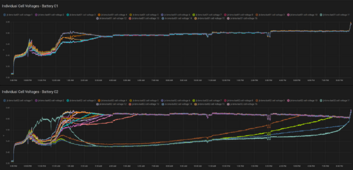silverstone
Solar Enthusiast
- Joined
- May 3, 2022
- Messages
- 1,041
@upnorthandpersonal : did you experience/notice a 0.7 V difference between the JK BMS v10 and JK BMS v11 ? I am guessing there is really some MOSFET body diode involved in the measurement circuit in one version of the JK BMS and not the other.
It's a bit of a coincidence at least that it's 0.7 V ... I originally thought it was offset or measurement tolerances. But what if the measurement circuit is different after all ?
It's a bit of a coincidence at least that it's 0.7 V ... I originally thought it was offset or measurement tolerances. But what if the measurement circuit is different after all ?



